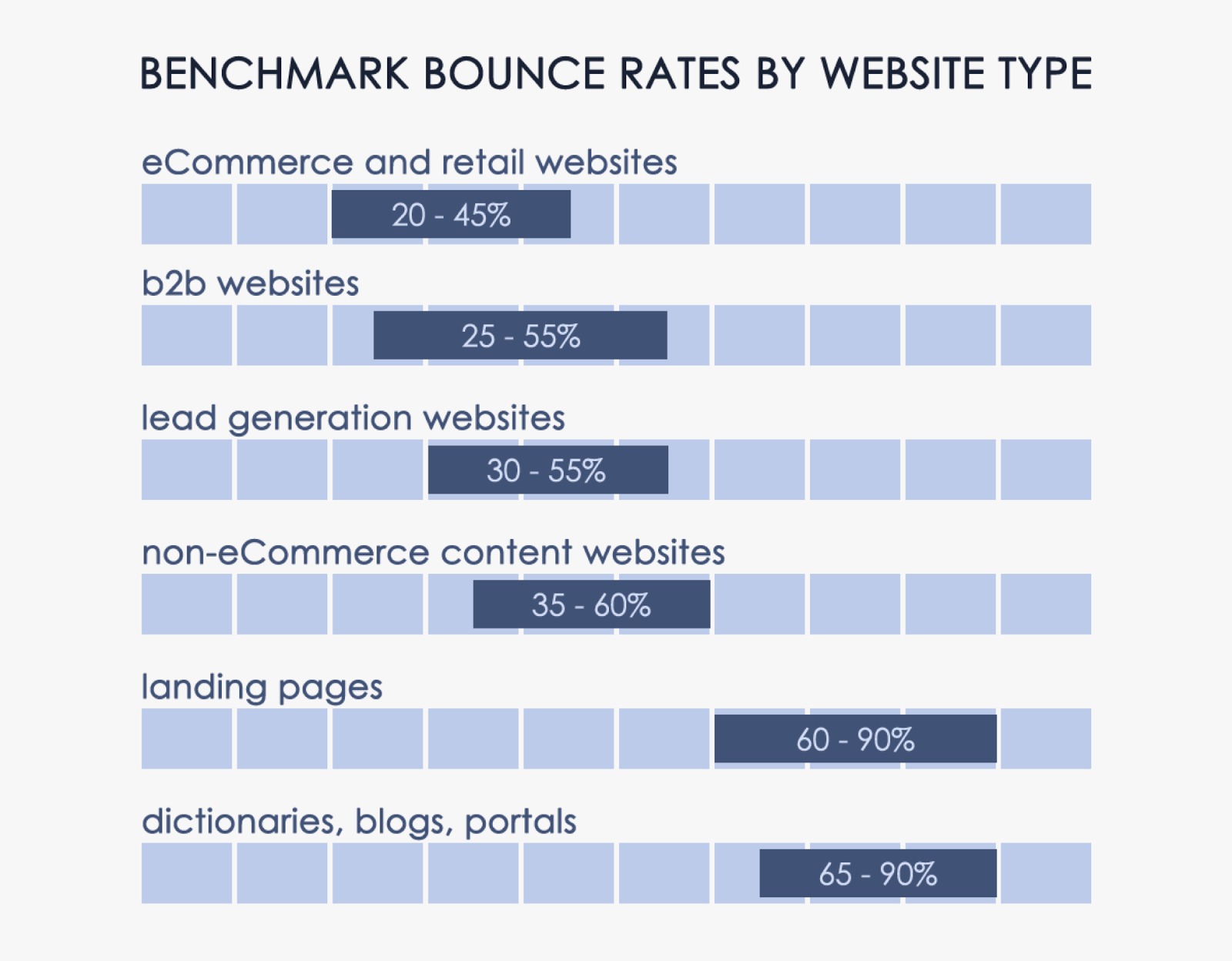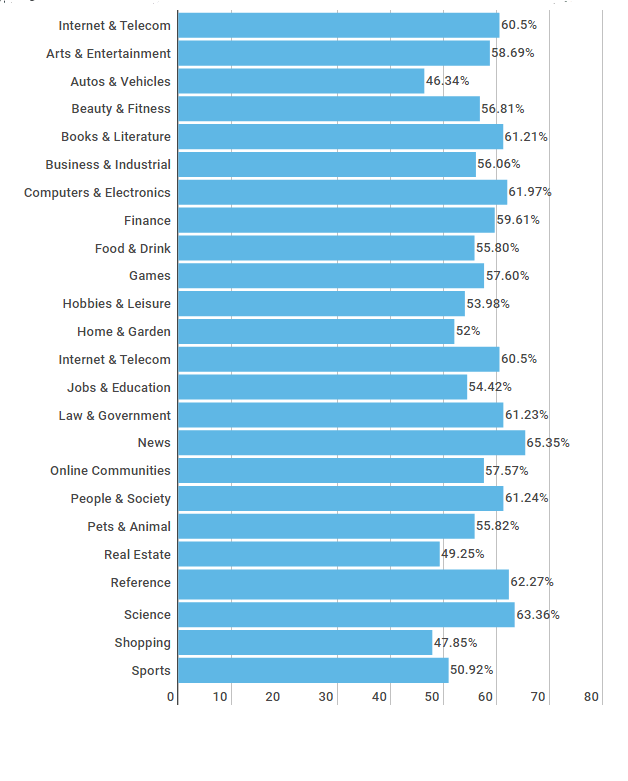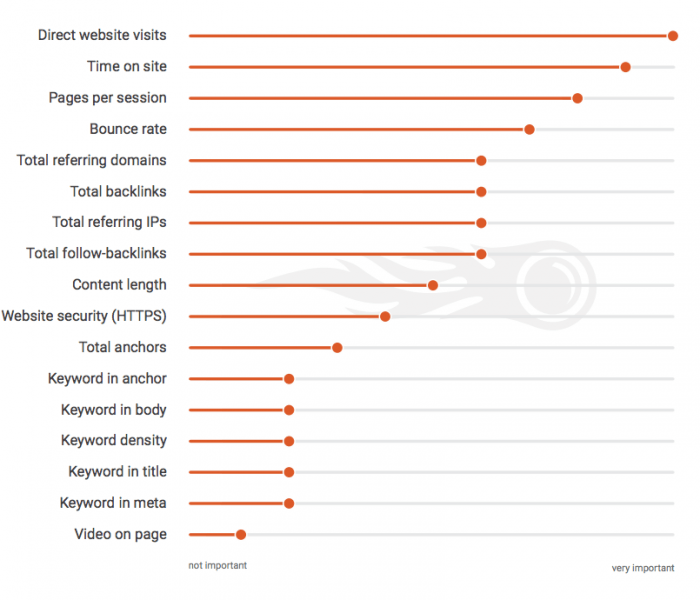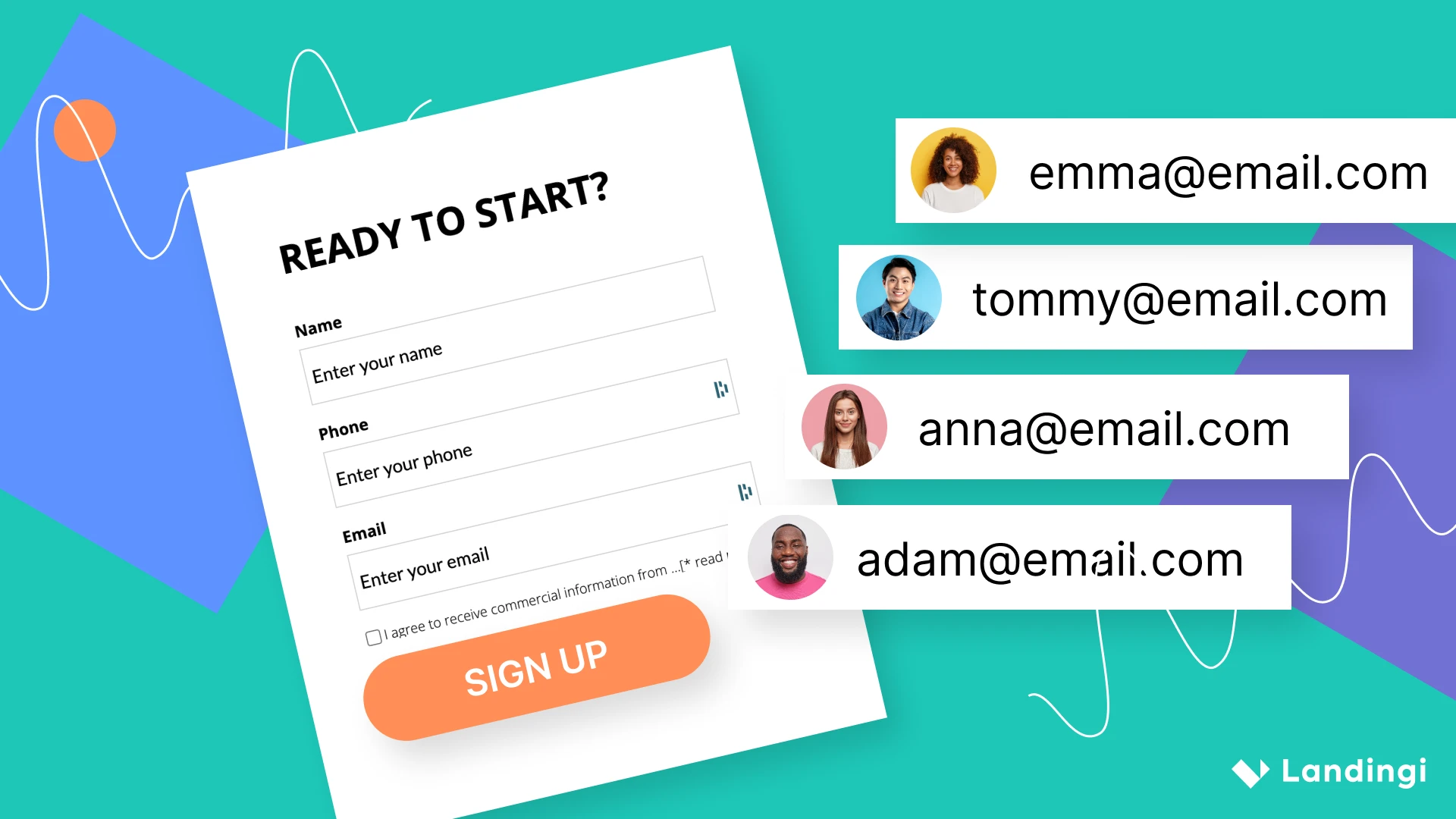Have you ever heard about the bounce rate? You may have noticed it once or twice when you looked into your Google Analytics (or other reporting tools) dashboard. Or you may have heard that a high bounce rate is bad and low is good. However, if the saying “the lower, the better” applies here, does it mean that a zero bounce rate is the perfect situation?
The vast majority of Internet users have a vague idea of bounce rate meaning, but in the digital marketing world it is said to be one of the most essential KPIs (Key Performance Indicator) when it comes to measuring website or landing page performance.
Once you read this article, you will know:
- what is bounce rate,
- how to measure and interpret bounce rate,
- is it true that the lower the bounce rate, the better,
- what does a 0 bounce rate mean,
- how bounce rate is related to SEO and conversions,
- how to improve bounce rate.
What is bounce rate?
A bounce is a single-page session on your website. It is, then, a situation when a user visits your site and exits without interacting with it more.
According to Google Analytics – “bounce rate is single-page sessions divided by all sessions, or the percentage of all sessions on your site in which users viewed only a single page and triggered only a single request to the Analytics server”.
In simpler terms – bounce rate is a metrics showing the percentage of your site visitors who entered and bounced off of your website.
“Bounce rate is single-page sessions divided by all sessions, or the percentage of all sessions on your site in which users viewed only a single page and triggered only a single request to the Analytics server.”
How to measure and interpret bounce rate?
Google Analytics, or any other reporting tool, calculates bounce rate for you and all you need to do is to check it in the analytics dashboard.
The formula for calculating bounce rate is quite straightforward – it is calculated by dividing the total number of single-page visits (for example only visiting your landing page) by the total visits.
Source; Kissmetrics
Therefore, if your landing page (created, for example, with Landingi page builder) is visited by 50 users who exit (bounce) without further interaction with your website and by 100 visitors overall, your bounce rate is 50%.
Nevertheless, when it comes to analysing bounce rate, the key aspect is to determine what exactly is considered a bounce. It may be:
- clicking on a link to another website or an ad,
- going back to the previous page by clicking the back arrow,
- closing the browser or the tab,
- typing in a new URL and clicking enter,
- session timeout (no action for 30 minutes).
If you use Google Analytics, you are able to analyze your bounce rate more accurately and compare it with your competitors in the market you operate on.
Once you set up benchmarking in your Google Analytics account, the tool will provide you with the industry average. Therefore, you will be able to have a better idea of how much it should be and whether the performance of your websites is good or bad.
What is more, site-wide bounce rate is too broad to draw up any conclusions or actions to be taken. In order to properly analyze the bounce rate you should segment the data and check how your bounce rates look in each segment. In Google Analytics you are able to, for example, segment by:
- age,
- gender,
- location,
- new and returning visitors,
- browser,
- device,
- type of site,
- channels (paid search / Facebook etc.).
Is a low bounce rate good?
As mentioned before, common sense dictates that bounce rate should be as low as possible. According to Kissmetrics, an average website bounce rate is 40%, but this can be misleading if interpreted incorrectly.
What you should have in mind is the fact that while analyzing your bounce rate, you should also take into consideration factors such as user experience, type of site or industry.
User experience
Regardless of the functionalities of your site, it is important to have in mind providing visitors with favorable experience, for example taking advantage of effective landing page templates. Otherwise, it it may keep users away and increase your bounce rate. In order to avoid this you should make sure that the content is engaging, the page loads fast and is easy to navigate.
Type of site

Click the image to go to source
The above graph shows benchmark bounce rates by website types. You can see that when it comes to landing pages or blogs, bounce rates tend to be high. Blog visitors usually leave after getting valuable information from the article they have read so there is nothing suspicious about high bounce rates when it comes to blogs.
In regards to landing pages, whose primary function is to convert visitors into leads, conversion amounting to 10% is considered as a good score. Therefore, high bounce rate (for example 90%) is not as bad as it may look at first glance.
Low bounce rates are primarily expected when it comes to ecommerce, retail or B2B websites where you want customers to explore services and products you offer. Hence, if bounce rate is low for these kinds of sites, it means they need some improvements or your offer may be not appealing.

Bounce rate benchmarks vary depending on the type of industry as well. For example, a study improved that the average bounce rate in the news industry was 65% compared to only 46% in the auto industry.
It is usually related to the functions of the site itself. When it comes to autos sites, they usually present specific offers and potential buyers usually look closer into these. Meanwhile, when a visitor has already read an article on a news site, sometimes they go to the next one but more often than that, they simply exit. Therefore, bounce rate may be a little bit higher.
What does a 0 bounce rate mean?
If we stuck to the common sense and had the “the lower the bounce rate, the better” rule in mind, bounce rate of 0 should be a dream. Nevertheless, a zero bounce rate seems pretty unrealistic as the possibility of every visitor exploring more than one site is quite improbable.
And unrealistic it is! As a zero bounce rate means that something is wrong with your site and you should act upon it.
The possible reasons behind a zero bounce rate may be as follows:
- inability to enter a site from an external link related to duplicated tags, redirect issues or third party plugins interfering with Google Analytics tracking,
- duplicated Google Analytics code – it may be related to two plugins installed or overlapping with Google Tag Manager (you can check it with Tag Assistant),
- other third party code interfering with Google Analytics code.
A zero bounce rate is not a common thing. It seems to be quite cool, but it is an issue that should be acted upon as bounce rate can serve you as a great metrics for analysis and improving your site performance.
How bounce rate is related to SEO and conversions
SEM Rush, SEO and SEM tool provider, classifies bounce rate as the 4th most important ranking factor on SERPs (Search Engine Results Page), right behind the number of direct website visits, time spent on site and pages visited per session.

Google takes into consideration a lot of factors when ranking pages but nobody truly knows what those factors are exactly. Nevertheless, bounce rate is a great metrics that can be used to assess engagement on your site and engaging sites are better ranked by Google so it makes the bounce rate important for SEO as well.
When it comes to conversions, it is said that bounce rate is inversely proportional to your conversion rate, especially on a campaign-specific landing page.
How to improve bounce rate?
Once you have analysed your bounce rate and discovered that it needs improvement, you can:
- improve user experience by getting rid of ads, pop-ups, building a clear navigation path or speeding up the page,
- work on more engaging and meaningful content,
- reduce the number of external links,
- place a search function in a visible place to encourage visitors to explore more.
As you can see, bounce rate is not such a straightforward topic and a lot of factors need to be taken into consideration upon analysis. Even if lowering bounce rate seems to be a good practice, sometimes it may not be needed as, depending on your industry or site type, it may already be good.







